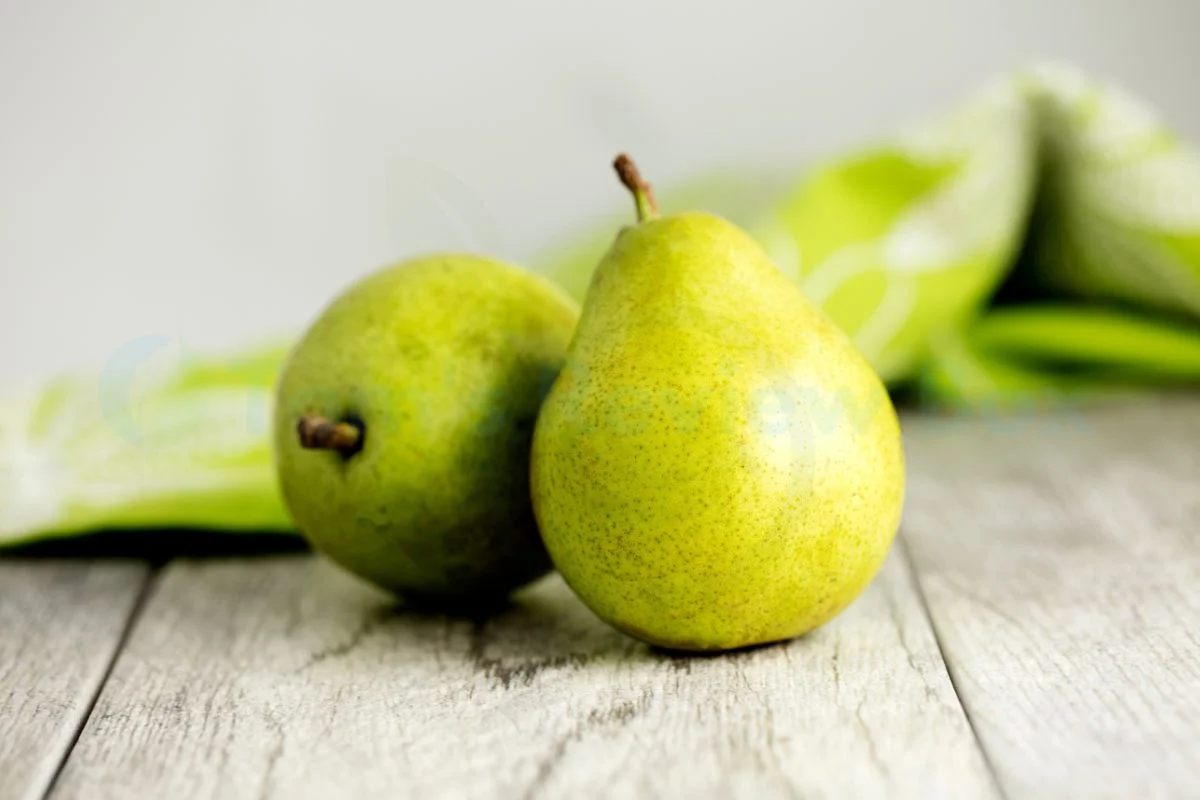
These delectable fruits, originating from the Anjou region in France, have a rich historical legacy. Bursting with juicy sweetness and a hint of citrus, Anjou pears are not only a treat for your taste buds but also pack a punch in terms of nutritional benefits. From their versatile uses in cooking and their significance as an essential source of dietary fiber and vitamin C, these pears hold a special place on our plates.
Anjou pears, fruit trees, come in two main varieties – green and red – each offering its own unique flavor profile. Whether you enjoy them fresh off the tree or incorporated into savory dishes or desserts, there's no denying that these pears bring an irresistible charm to any recipe. Get ready to explore everything from their cultivation to best practices for selecting ripe ones at your local market.
Nutritional Profile

Anjou Pear Varieties
Anjou pears come in different varieties, each offering a unique blend of nutrients. These pears are an excellent source of dietary fiber, which is essential for healthy digestion and can help prevent constipation. The fiber content in Anjou pears also supports heart health by helping to lower cholesterol levels.
In addition to fiber, Anjou pears contain significant amounts of vitamin C. This vitamin plays a crucial role in supporting the immune system, helping the body absorb iron, and promoting healthy skin. Moreover, Anjou pears provide potassium, an important mineral that helps regulate blood pressure and support proper muscle function.
Furthermore, these pears boast a range of antioxidants that contribute to overall health and well-being. Antioxidants help protect cells from damage caused by free radicals and may reduce the risk of chronic diseases such as cancer and heart disease.
Anjou pears are not only nutritious but also low in calories and fat. They make for a satisfying snack or ingredient in various dishes without significantly contributing to calorie or fat intake.
Seasonal Availability
The availability of different varieties adds diversity to the flavor profile and appearance of Anjou pears throughout their seasonal peak times. For instance, red Anjou pears offer a similar taste to green Anjous but with distinct differences in coloration and skin texture. Their deep red exterior makes them visually appealing while still providing the same nutritional benefits as their green counterparts.
Green Anjou is perhaps the most widely recognized variety due to its juicy texture and sweet flavor profile. Its versatility makes it suitable for both eating fresh out-of-hand or using it as an ingredient in cooking or baking recipes.
Apart from these common types, there are less widespread variations like Star Crimson and Doyenne du Comice that cater to diverse consumer preferences based on taste, texture, sweetness level, or appearance.
History and Origins
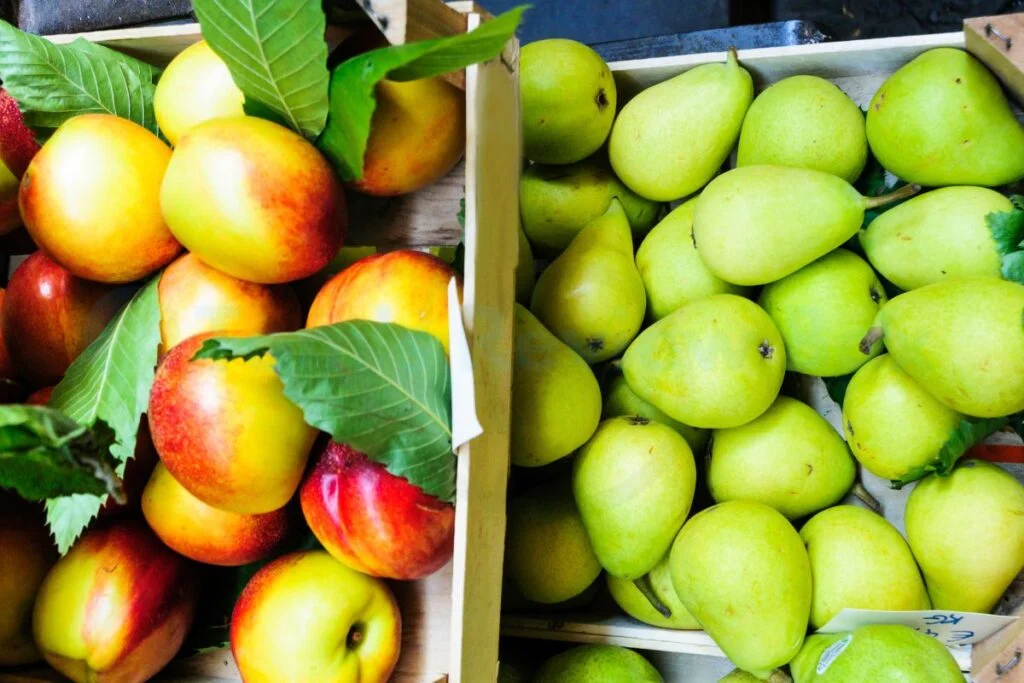
Anjou Pears Heritage
Anjou pears are a delightful fruit that's typically available from September to May, with their peak season falling between October and January. These juicy pears are best enjoyed during their peak season for the most delicious flavor and freshness. Anjou pears come in two varieties: green Anjou (also known as d'Anjou) and red Anjou.
These pears originated in Belgium back in the 1800s. Named after the region in France where they were extensively grown, Anjou pears made their way to the United States during the early 19th century. With such a rich history, it's no wonder that these fruits have become a staple in many households around the world.
U.S. Production History
In the United States, years of cultivation have solidified Anjou pears as one of the most popular pear varieties grown across different states. Oregon and Washington are among the top producers of this flavorful fruit, benefiting from their ideal climate conditions for pear cultivation.
The Pacific Northwest has been instrumental in shaping America's love affair with Anjou pears due to its conducive environment for growing this delectable fruit. This region's moderate temperatures and fertile soil provide an excellent setting for producing high-quality Anjous that make their way into grocery stores nationwide.
With such a rich history spanning centuries, it's clear that anjou pear holds a special place not only on our plates but also within agricultural traditions both domestically and internationally.
The Nutritional Value of Anjou Pears
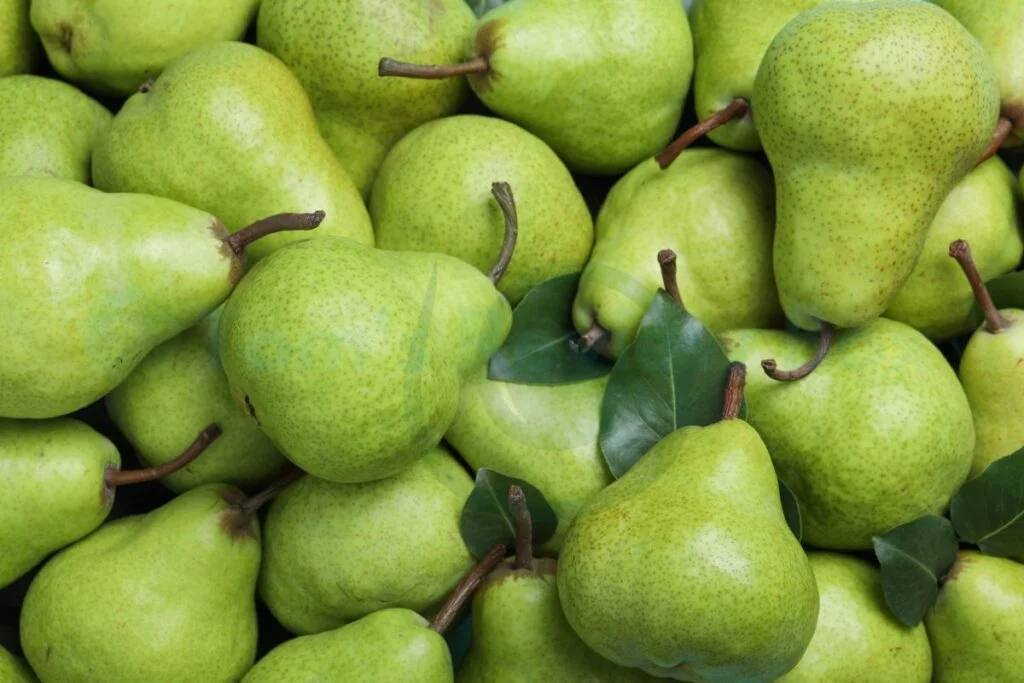
Health Benefits
Anjou pears are primarily grown in Oregon and Washington, where the Pacific Northwest climate provides an ideal environment for their cultivation. Over the years, the production of Anjou pears has steadily increased, making them more readily available to consumers. These pears offer various health benefits due to their nutritional composition.
The high fiber content in Anjou pears promotes digestive health, aiding in smooth digestion and preventing constipation. Furthermore, these fruits are sodium-free and cholesterol-free, contributing positively to heart health. The antioxidants present in Anjou pears play a vital role in boosting the immune system.
Caloric Content
A medium-sized Anjou pear contains approximately 100 calories. Most of these calories stem from natural sugars found within the fruit rather than added sugars or unhealthy fats. This makes Anjou pears a low-calorie snack option compared to many other fruits while still providing essential nutrients.
An additional advantage is that consuming foods with naturally occurring sugars can be more beneficial than those with added sugars because they often come packaged with fiber, which slows down sugar absorption and prevents blood sugar spikes.
Vitamins and Minerals
Aside from being low in calories, Anjou pears also offer essential vitamins and minerals such as vitamin C and potassium. Vitamin C is crucial for maintaining healthy skin and promoting wound healing while potassium plays a key role in regulating blood pressure.
Moreover, the presence of dietary fiber not only aids digestion but also helps control blood sugar levels by slowing down the absorption of glucose into the bloodstream after meals.
Identifying Anjou Pears
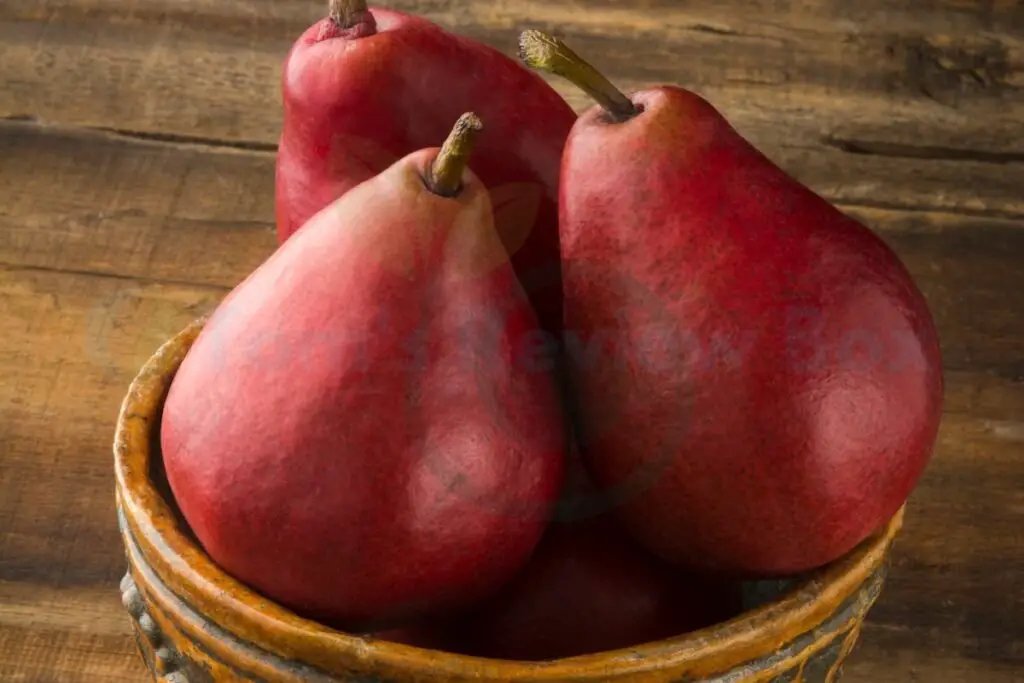
Color and Shape
Anjou pears come in two main colors: green and red. The green variety of Anjou pears boasts a classic bell shape with a smooth skin texture. On the other hand, the red Anjou pears display a vibrant red skin while maintaining a similar shape to their green counterparts. Both types feature a distinctive stem at the top, making them easily recognizable.
. They provide a good amount of vitamin C, which supports immune function and skin health. These pears are rich in potassium, crucial for maintaining healthy blood pressure levels. Furthermore, they contain small amounts of vitamin K, copper, as well as other vital nutrients that contribute to overall well-being.
Texture and Taste
The texture of Anjou pears is notably smooth regardless of their color variation. This makes them enjoyable to bite into whether eaten raw or incorporated into various recipes such as salads or desserts. In terms of taste, both green and red Anjou pears offer a delightful blend of sweetness with subtle hints of citrus flavor.
In addition to their appealing taste profile and texture consistency, it's worth noting that Anjou pears possess an impressive shelf life when stored properly at home. Their firmness allows for longer storage periods compared to some other pear varieties without compromising on quality or flavor.
Overall, the distinct appearance, nutritional richness, and versatile use make Anjou pears a popular choice among consumers looking for both delectable fruit options and dietary benefits.
Ripening Process of Anjou Pears
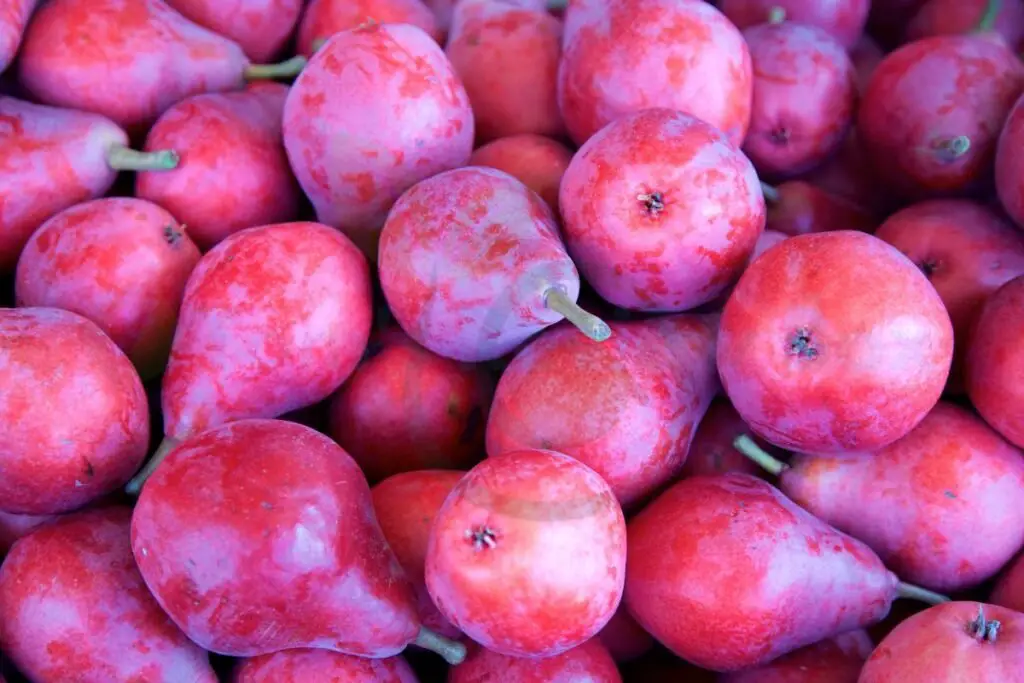
Stages of Ripeness
Anjou pears are known for their smooth, firm texture when ripe. This means that when you sink your teeth into a perfectly ripe Anjou pear, you'll experience a delightful crunch followed by the juicy burst of its sweet flavor. The taste is often accompanied by subtle citrus notes, adding an extra layer of complexity to the overall flavor profile. It's worth noting that the flesh of a ripe Anjou pear is non-gritty, making it enjoyable to eat both raw and cooked.
When determining if an Anjou pear is at its peak ripeness, there are several key indicators to look out for. Firstly, check for firmness near the stem; this area should yield slightly when pressed gently. A ripe Anjou pear will also emit a sweet fragrance at the stem end—this aroma serves as another sign that it's ready to be enjoyed. Lastly, inspect the skin for any soft spots or wrinkles; these may indicate overripeness.
Storage Tips
To ensure maximum enjoyment and freshness from your Anjou pears, proper storage methods are crucial. When purchasing unripe pears with plans to enjoy them later on, store them at room temperature until they reach optimal ripeness—a process that typically takes around 3-5 days.
Once your Anjou pears have reached their ideal ripeness level and you're not quite ready to consume them yet, consider placing them in the refrigerator where they can stay fresh for up to one week while maintaining their delicious flavor and texture.
If you find yourself with an abundance of fully ripened Anjous and aren't able to consume them all within a week's time frame, don't fret! These versatile fruits lend themselves well to various preservation methods such as canning or freezing—both great options for extending their shelf life while retaining their wonderful taste and nutritional benefits.
Comparing Anjou and Bartlett Pears
Anjou pears come in two main varieties: green and red. The green Anjou pear offers a milder taste, making it versatile for various culinary uses. Its subtle flavor makes it an excellent addition to salads or as a standalone snack.
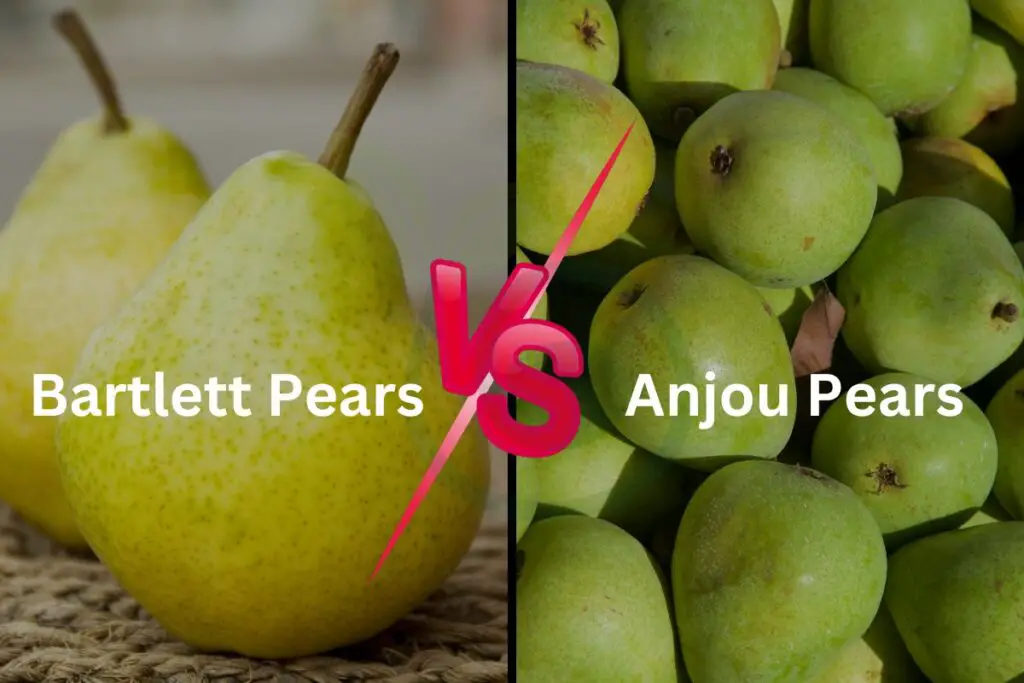
On the other hand, the red Anjou pear boasts a slightly sweeter flavor profile compared to its green counterpart. This variety also tends to be more aromatic, adding an extra layer of complexity to dishes or when eaten on its own.
Unripe Anjou pears should be stored at room temperature until they reach the desired level of ripeness. Once ripe, refrigerating them slows down further ripening and extends their shelf life significantly. A ripe Anjou pear is best used within 3–5 days for optimal quality.
In terms of usage in recipes, both the green and red varieties of Anjou pears offer unique flavors that can enhance different types of dishes. For instance, the milder taste of the green variety complements savory salads with its refreshing crunchiness without overpowering other ingredients.
Conversely, the slightly sweeter and more aromatic nature of the red Anjou pear makes it an ideal choice for desserts like tarts or pies where a hint of sweetness is desired without being too overwhelming.
Anjou Pear Tree Care
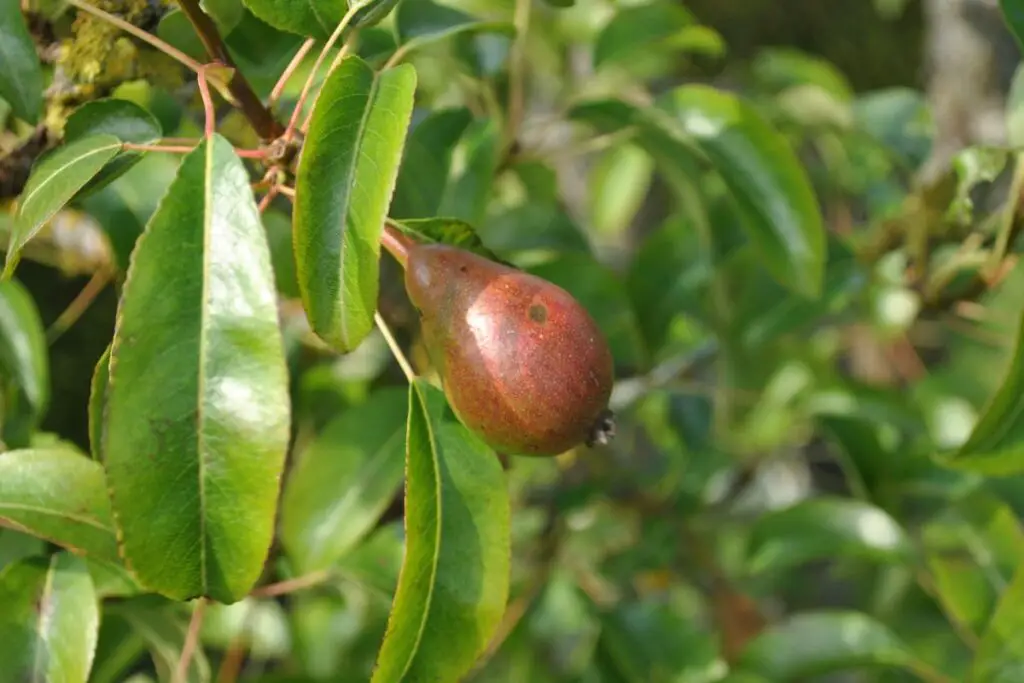
When planting Anjou pear trees, it's essential to choose a suitable location with well-drained soil and full sun exposure. This ensures optimal growth and fruit production. Anjou pears are versatile fruits, making them ideal for various culinary applications. They pair excellently with cheeses like blue cheese or brie in salads or appetizers due to their mild sweetness. Their sweet flavor profile makes them perfect for desserts such as tarts or pies.
Aside from culinary uses, Anjou pears also complement savory dishes like pork or chicken due to their mildly sweet taste. When planning the layout of Anjou pear trees in an orchard or garden, it's crucial to space them at least 20 feet apart. This ample spacing allows each tree enough room for proper growth and development.
To ensure the healthy growth of Anjou pear trees, regular maintenance is crucial. Grafting Anjou trees onto dwarf rootstock can help control tree size, making them suitable for smaller spaces such as home gardens or urban landscapes. Proper maintenance practices contribute significantly to the overall health and productivity of Anjou pear trees.
In addition to adequate spacing during planting, providing sufficient water during dry periods is essential for promoting healthy fruit production. Regular pruning helps maintain the shape of the tree while also allowing sunlight and air circulation into the canopy.
Culinary Uses of Anjou Pears
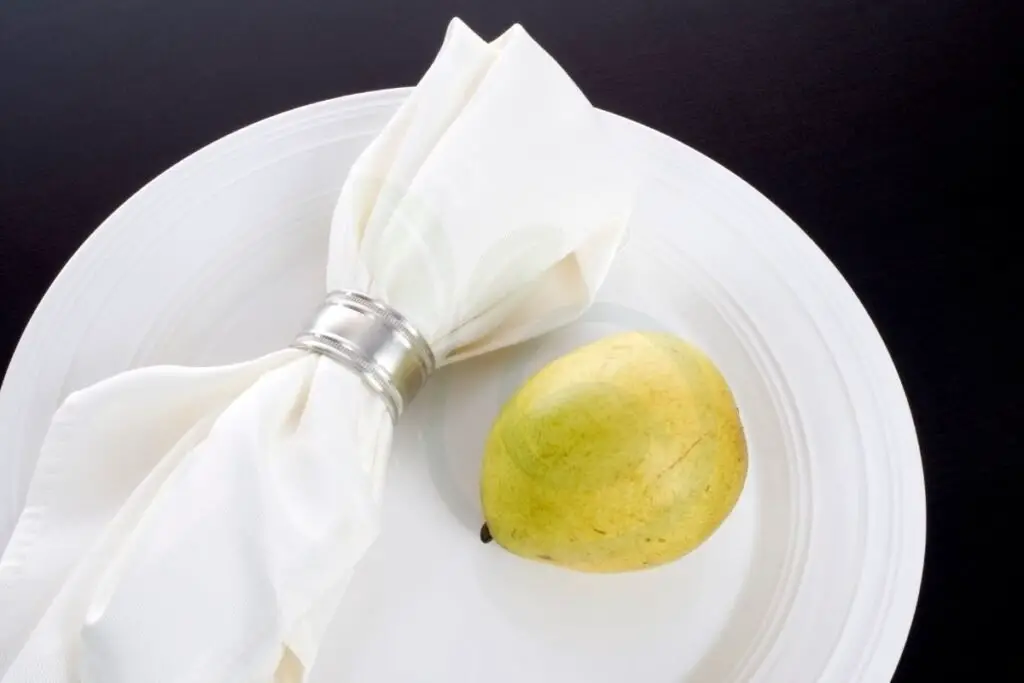
Savory Pairings
Anjou pears are versatile fruits that can be used in various savory dishes. Their sweet and slightly citrusy flavor makes them a perfect addition to salads, sandwiches, and appetizers.They can be sliced thinly and added to salads for a delightful burst of sweetness. Their firm texture holds up well when paired with cheeses such as gorgonzola or brie on a charcuterie board.
Regular pruning helps maintain tree health and promotes fruit production. It's essential to monitor soil moisture levels regularly, ensuring consistent watering during dry periods. Proper pest management is crucial for protecting anjuo trees from common pests like aphids or codling moths.
Sweet Creations
Apart from being great additions to savory dishes, anjou pears also shine in sweet creations. The subtle sweetness of these pears pairs beautifully with salty or rich flavors commonly found in desserts and baked goods. For instance, pairing sliced anjuo with prosciutto creates an elegant appetizer option that balances the saltiness of the meat with the pear's natural sweetness.
They complement grilled chicken or turkey sandwiches perfectly by adding a refreshing touch of sweetness while balancing out the savory elements.
Try adding diced anjou into stuffing recipes for added sweetness and texture—this enhances the overall flavor profile of the dish while providing a pleasant contrast in textures between the soft bread base and crisp pear pieces.
Organic Cultivation of Anjou Pears
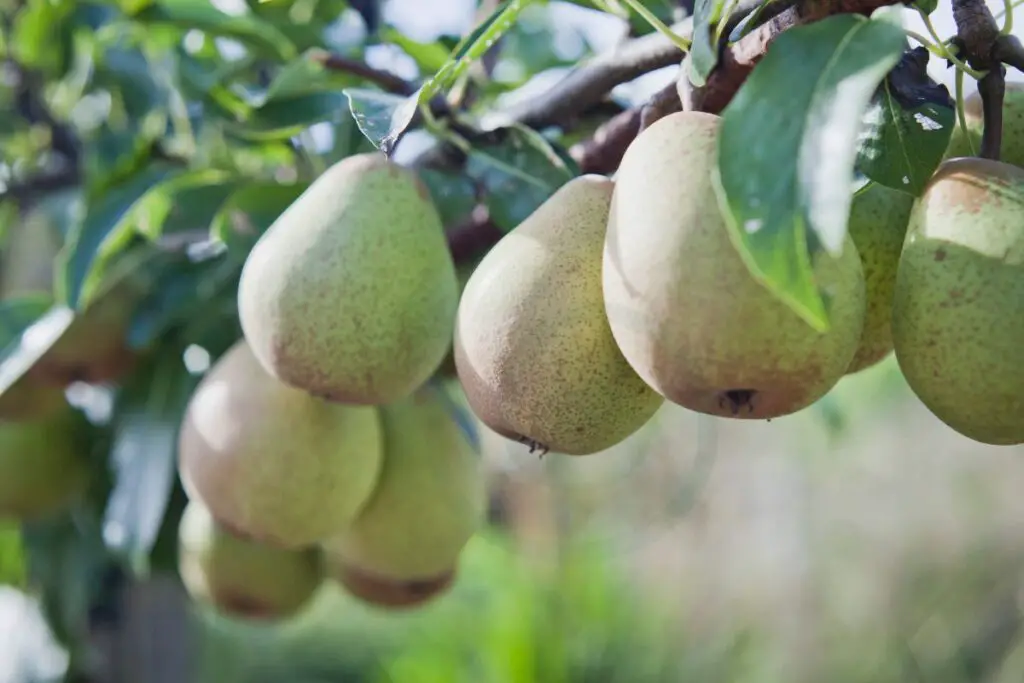
Organic Farming Practices
Anjou pears are commonly grown in organic orchards using sustainable methods. Farmers avoid synthetic pesticides and fertilizers, instead opting for natural techniques to maintain soil fertility. For example, they utilize crop rotation and composting to nurture the fruit trees. By doing so, they ensure that the anjou pears are free from harmful chemicals.
In addition to sustainable farming practices, organic cultivation also involves careful attention to the health of the fruit trees themselves. When planting new anjou pear trees, farmers often use a method called bare root planting. This technique involves transplanting young trees without any soil around their roots. It's a traditional approach that helps establish healthy root systems for these fruit-bearing trees.
Benefits of Organic Pears
Certified organic anjou pear orchards offer several benefits over conventional ones. Firstly, by prohibiting the use of synthetic pesticides or fertilizers, these farms prioritize consumer health and environmental sustainability. As a result, consumers can enjoy delicious anjou pears without worrying about exposure to harmful chemicals.
Moreover, organic farming practices have positive impacts on the environment as well. By promoting biodiversity through crop rotation and avoiding chemical inputs like synthetic pesticides and fertilizers, these orchards contribute to healthier ecosystems overall.
Organic cultivation also aligns with consumer preferences for sustainably produced fruits like anjou pears which can be used in various culinary applications such as caramelizing slices as toppings for cakes or ice cream sundaes or baking whole with cinnamon and honey for delightful desserts.
Recipes Featuring Anjou Pears
Appetizers and Salads
The benefits of choosing organic options are numerous. Eating organic Anjou pears reduces exposure to potentially harmful synthetic chemicals commonly used in conventional farming practices. This not only promotes personal health but also supports environmental conservation by reducing chemical runoff into water sources.
Moreover, supporting organic farming contributes to biodiversity preservation. The natural cultivation methods used in organic farming often result in better-tasting fruits with higher nutritional value. For instance, adding slices of fresh Anjou pears to a bed of greens alongside nuts and a tangy vinaigrette dressing creates a delightful combination of sweetness and crunchiness that enhances the overall salad experience.
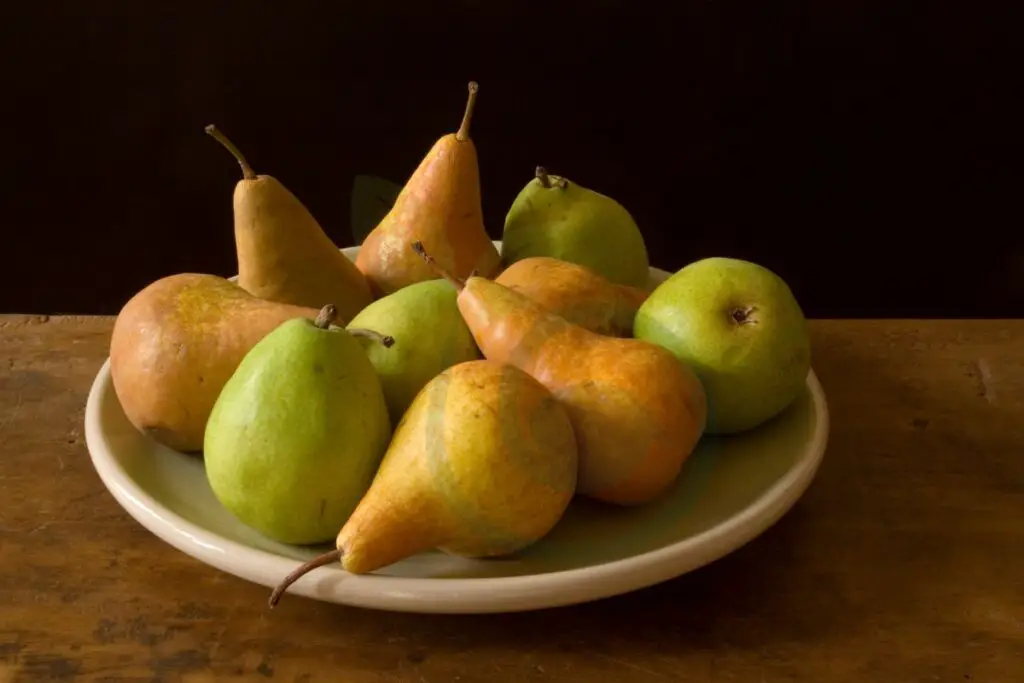
Main Courses
In main courses, Anjou pears can be utilized in various ways to add depth and flavor complexity. Slicing fresh Anjou pears into salads paired with nuts, greens, and vinaigrette dressing introduces a delightful crunchiness-and-sweetness combination that elevates the dish's overall appeal.
Diced Anjou makes for an excellent addition to grain-based salads such as quinoa or couscous salad recipes. The sweet juiciness of the pear complements the earthy flavors of these grains beautifully.
Furthermore, serving thinly sliced Anjou on crostini topped with goat cheese presents an elegant appetizer option that is sure to impress guests at any gathering or dinner party.
Desserts
When considering desserts featuring Anjou pears, their mild sweetness makes them versatile additions to various sweet dishes while still maintaining their distinct flavor profile. Incorporating diced Anjou into stir-fries featuring pork or chicken adds a unique texture contrast within main courses while infusing them with a pleasant sweetness that balances out savory flavors effectively.
Roasted slices of Anjou pear alongside roasted vegetables serve as a delectable side dish option suitable for main courses such as roast dinners due to their ability to caramelize beautifully when cooked.
Finally, due to their mild sweetness complementing richer flavors nicely within main courses like game meats such as duck or venison pair well with Anjou pears, creating harmonious culinary experiences for those who enjoy experimenting with different flavor combinations.
Summary
You've now got the lowdown on Anjou pears. From their nutritional value to their culinary uses and even tips on identifying and caring for Anjou pear trees, you're well-equipped to make the most of these delectable fruits. Whether you're a seasoned chef looking to incorporate them into your recipes or a gardening enthusiast interested in cultivating Anjou pear trees, you're all set to dive in and enjoy the goodness these pears have to offer.
So, what are you waiting for? Get your hands on some Anjou pears and start experimenting with new recipes or consider planting an Anjou pear tree in your garden. The possibilities are endless, and now that you're armed with knowledge about these fantastic fruits, it's time to put that knowledge into action. Happy pear-ing!
Frequently Asked Questions
How do I identify ripe Anjou pears?
You can gently press near the stem of the pear, and if it gives slightly, then it's ripe. Also, check for a sweet aroma at the base of the stem. Avoid pressing too hard as it may bruise the fruit.
What are the nutritional benefits of Anjou pears?
Anjou pears are rich in fiber, vitamin C, and antioxidants. They support digestive health, boost immunity, and contribute to overall well-being. Incorporating them into your diet can help maintain a healthy lifestyle.
Can I use Anjou pears in cooking or baking?
Absolutely! Their firm texture makes them suitable for both raw consumption and cooking applications like poaching, baking in tarts or pies, or adding to salads for a delightful flavor and crunch.
How should I care for an Anjou pear tree?
Ensure proper sunlight exposure and regular watering while avoiding waterlogged conditions. Pruning is essential to promote air circulation within the tree canopy and encourage fruit production.
Are there any specific organic cultivation practices for Anjou pears?
Yes! Organic cultivation involves natural fertilizers, pest control methods such as beneficial insects or traps to minimize chemical usage while ensuring sustainable growth practices.
Image Source: Paid image from CANVA


